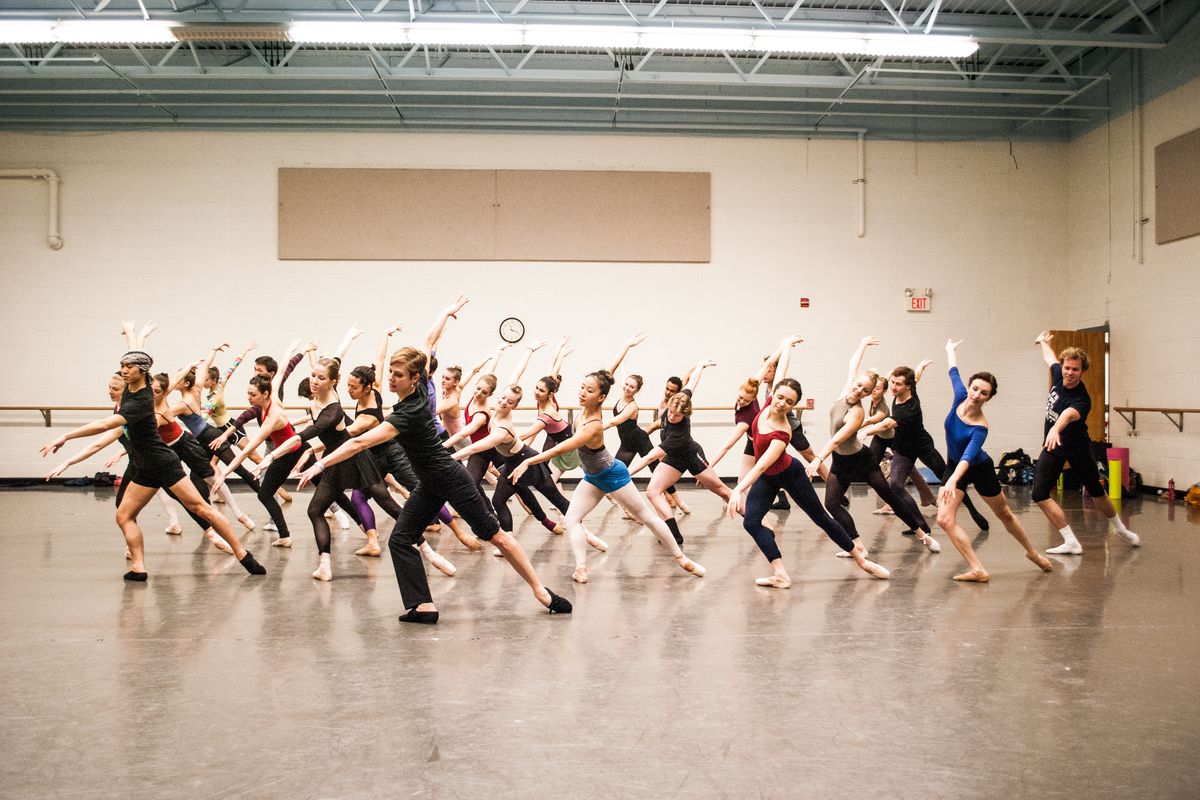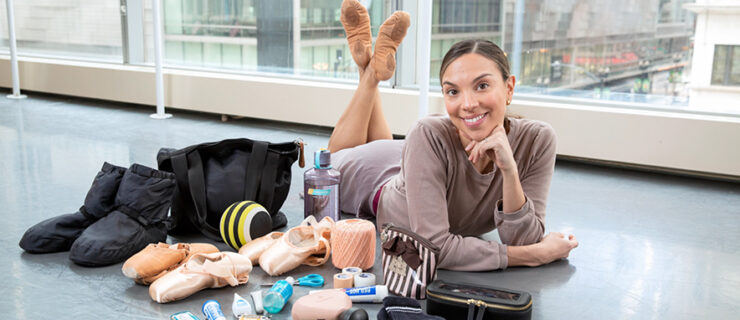Grand Rapids Renaissance: In Four Years Patricia Barker Has Rebuilt The Repertoire and Reinvigorated The Company
This story originally appeared in the April/May 2015 issue of Pointe.
Underneath Grand Rapids Ballet artistic director Patricia Barker’s million-watt smile lies an unyielding determination to realize her artistic visions. So when friend Maurice Sendak, author of Where the Wild Things Are, unexpectedly died before he could introduce her to fellow author Chris Van Allsburg (The Polar Express and Jumanji), Barker took it upon herself to visit Van Allsburg’s Massachusetts home to convince the Grand Rapids native to help design GRB’s newNutcracker production. When Van Allsburg was reluctant to venture down that well-traveled road, Barker convinced him otherwise. The resulting 2014 premiere proved a seminal moment in the company’s history.
It was with that same determination that the first-time artistic director vaulted GRB from a largely unknown regional company in Michigan to one in the national spotlight in less than four years. Born in Richland, Washington, Barker studied at the Boston Ballet School and at Pacific Northwest Ballet School before joining PNB in 1981. She became a principal in 1986, starring with the company until her retirement in 2007.
Prior to her taking the reins at GRB in 2010, Barker honed her business and leadership skills as designer/owner of dancewear line BKWear, as a spokesmodel and designer for Bloch Inc. and as an artistic advisor to Slovak National Theatre Ballet. Former PNB founding artistic director Francia Russell had sparked Barker’s desire to direct years earlier, so when GRB’s executive director came calling, she jumped at the opportunity.
Barker drew on all these experiences to turn around the in-debt, 16-member troupe she inherited from outgoing director Gordon Peirce Schmidt. The 38-year-old company came with a then-struggling school (however, alumni include New York City Ballet principal Maria Kowroski) and the Meijer-Royce Center for Dance that houses the studios, administrative offices and a 300-seat theater. But when Schmidt left, he took the 50 ballets he had created for the company with him.
Barker installed a new repertoire that includes classics, such as Swan Lake and Balanchine works, and modernized versions of story ballets, like Mario Radacovsky’sRomeo & Juliet and Olivier Wevers’ A Midsummer Night’s Dream. A slew of new contemporary works by noted choreographers, including Annabelle Lopez Ochoa, Brian Enos and Robyn Mineko Williams, rounds out the repertoire.
Today, Michigan’s only professional ballet company regularly sells out its home performances, and this year it is completing a $2.5 million capital campaign, having already received a $1 million endowment. The funds will be used to make the company debt-free, help pay for its new Nutcracker and provide a cash reserve for future projects.
Those successes have also meant a huge increase in dancers wanting to join the now 33-member unranked company. Barker does things a bit differently than most: There are no divisions of labor among GRB’s 5 trainees, 6 apprentices and 22 company members. “They all train together and compete for the same roles,” says Barker. The classifications are primarily for designating salaries. “I want all the dancers to feel they have a chance at a great role and to have work created on them, and I want choreographers to be inspired by the dancers in front of them,” says Barker.
Senior company member Laura McQueen Schultz, 32, says that ensemble approach keeps her on her toes. Though she has been with the company since 2003, Schultz says Barker’s arrival revitalized her interest in GRB and ballet. “Artistically, I am being challenged much more now, and the number of choreographers I have worked with since she arrived has skyrocketed,” she says.
One of only four dancers left from the prior regime, Schultz now describes the company as more international and the atmosphere more amiable and professional. She says Barker is approachable, yet firm when she needs to be, and a coach who instills confidence. “It’s like I got to dance in a new company without moving,” says Schultz.
In May, the company will premiere Radacovsky’s Beethoven. The contemporary story ballet, created in collaboration with the Czech National Ballet Brno, takes its inspiration from the women who inspired the iconic composer and his music.
Now with its rich new repertoire, Barker says the company is built for touring. GRB currently performs throughout Michigan and appeared at a St. Louis festival last summer, and Barker is in talks with presenters both nationally and abroad about future opportunities. “What continues to drive me is not only helping this organization to thrive and be noticed,” she says, “but for us to become Michigan’s number-one arts export.”
Audition Advice
Open auditions are held year-round at Grand Rapids Ballet or by video. Check with the company for additional dates and sites. “Personality and athleticism are key,” says Patricia Barker. “It doesn’t matter if you have long or short legs, arched feet or not. The ability to look me in the eye and say ‘I want to dance’ is what counts.” Barker suggests that dancers schedule extra time should they be asked to learn repertoire or work with a partner. “I want to see the dancer next to my company. I need to know they will fit in personality-wise,” says Barker.
Grand Rapids Ballet At a Glance
- Number of dancers: 33
- Length of contract: 34 weeks
- Starting salary: $300 per week
- Performances per year: 65





